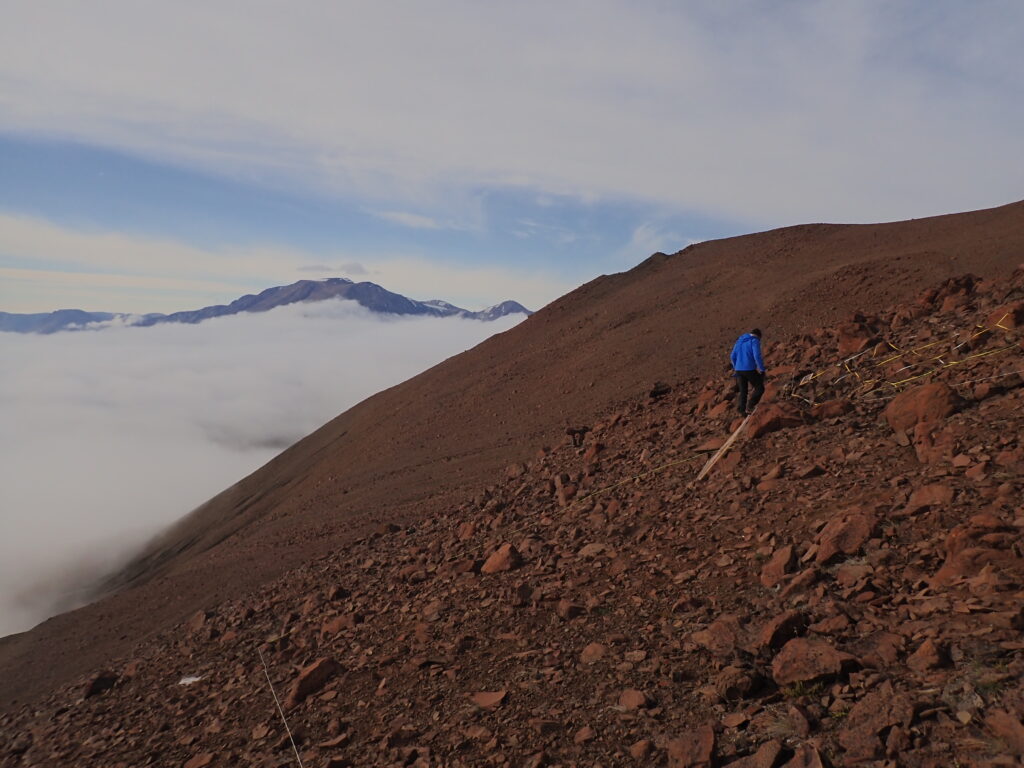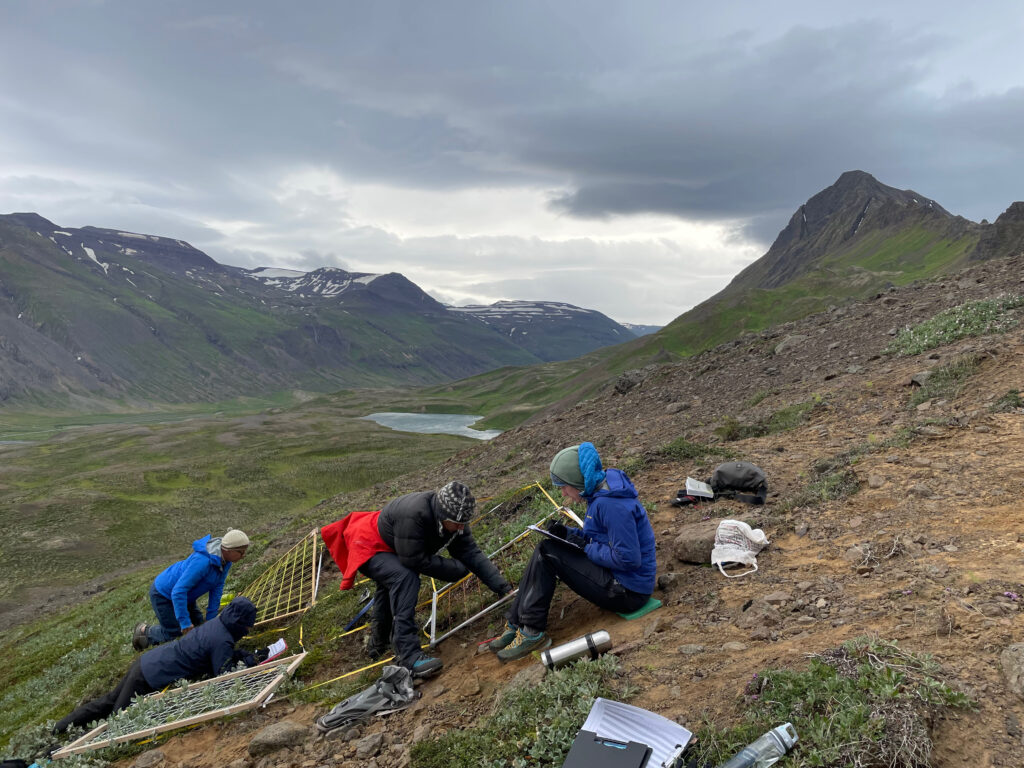High-elevation and high-latitude ecosystems are, and will be, particularly affected by the rapid and unprecedent climate warming our planet is currently experiencing, with rates of temperature increase two to four times higher than the global average since the 1980s. In line with these warming trends over recent decades, most plant species located at their cold limits in the Arctic are reacting positively to climate warming by shifting their phenology and increasing their biomass. The loss of cold temperatures also offers more opportunities to colonise new areas higher in latitude and elevation, thus increasing local biodiversity. Both the increase in vegetation growth and in biodiversity have led to the greening of the Arctic and overall, to already-observed profound transformations of the landscape, such as trees and shrubs invading the tundra.
Outposts of vegetation at high latitude and elevation in the Arctic are the sentinel of the tundra in the context of global warming. Understanding how vegetation of this biome responds to climate change is a pressing ecological issue on a global scale since the tundra represents more than 10% of the terrestrial biosphere and is a major determinant of the global carbon cycle and of feedbacks on the climate system.
In this context, long-term ecological data has been shown to be critical for properly quantifying ecological responses to environmental changes such as global warming. Permanent plots of vegetation belong to such a category of environmental data. Apart from informing about the pathway of vegetation communities, permanent plots can also provide the first insights and help formulating hypotheses about the candidate causes (“why”) and mechanisms (“how”) of changes that are occurring.
Thirteen years after their establishment, we have resurveyed and established vegetation permanent plots on seven subarctic and arctic summits in Iceland and Greenland to maintain two of the most valuable sites of the GLORIA (Global Research Initiative in Alpine environments) network and to quantify recent changes in plant species cover, abundance and distribution. These seven GLORIA summits are some of the uppermost latitudinal and elevational outposts of vegetation communities observed in a standardised and systematic way.

The GLORIA mountains are calling us… and we must go
This project originated from two separate strands of activity in 2019 that merged and evolved into this successful international action uniting representatives of six GLORIA target regions in Iceland, Switzerland and Austria to survey a seventh one in Greenland.
On one hand, Sonja, PI of two GLORIA regions in Switzerland, scheduled to join the 2019 SPI GLACE expedition, used her non-refundable ticket to assist Icelandic colleagues with fieldwork. While in Iceland, she touched base with Starri, PI of the Icelandic GLORIA site to discuss the possibility to collaborate and resurvey the Icelandic and Greenlandic GLORIA sites, which had been missing in this network for assessing climate-driven vegetation change over a pan-European gradient of mountain regions.
On the other hand, the second strand had its origin in a discussion in October 2019, embellished with genepi, at the end of a week of workshop in Wallis. The theme of this workshop, the contribution of long-term ecological research programs in mountains to global policy, could already give a glimpse of the objective of our subarctic-arctic expedition.
For one week, David Lindenmayer, a specialist of long-term research monitoring programs, preached in favor of collecting long-term ecological data with a strong business case: detecting surprise events, validating simulation models and even promoting multidisciplinary research. Three protagonists of the SUMITER expedition were already present around the table during this Friday evening after work: we, Sabine and Christophe, the future two PIs of the SUMITER expedition, and Harald Pauli, head of the GLORIA network coordination team. The GLORIA network is composed of 130 targets regions, each with usually four summit sites. Target regions are distributed over six continents. Every seven years, since 2001, the distribution and abundance of vascular plants are recorded with a highly standardized method on mountain summits of the European target region.

After having convinced his audience of the inestimable value of the long-term observations generated by the GLORIA network, Harald Pauli seized the opportunity to mention that the two most northern GLORIA sites in Europe were currently in distress, for lack of financial and human resources. With a heavy insistence and addressing us directly, he added that these sites must absolutely be visited before the next GLORIA campaign of 2022.
Following these simultaneous and obvious knocks on the door, it seemed clear to all of us, as being the core of the future participants of the SUMITER expedition, that Arctic GLORIA summits were waiting for us and that we had to quickly move from the theory of a workshop to the preparation of an expedition. At this time, we were still lacking a fully operational team and some financial means.



From theoretical considerations on long-term monitoring in Wallis to its practical aspects and implementation on the first GLORIA summit of the SUMITER expedition in Iceland. © Christophe Randin, all rights reserved
Christophe Randin is a senior scientist at the University of Lausanne and the Aubert Foundation. His field trip took place in summer 2021 with financial support from an SPI Exploratory Grant.
Header photograph: The Glacier buttercup (Ranunclus glacialis) on the top of the Zackenberg mountain (Greenland, 74°N, 1300 m.a.s.l.). This buttercup is an arctico-alpine species and one of the European flowering plants growing at the highest elevation and latitude (> 4’000 m in Switzerland and 77.4° in Greenland). Its name finds its origin from being commonly found on glacier and snowbed margins. © Christophe Randin, all rights reserved.